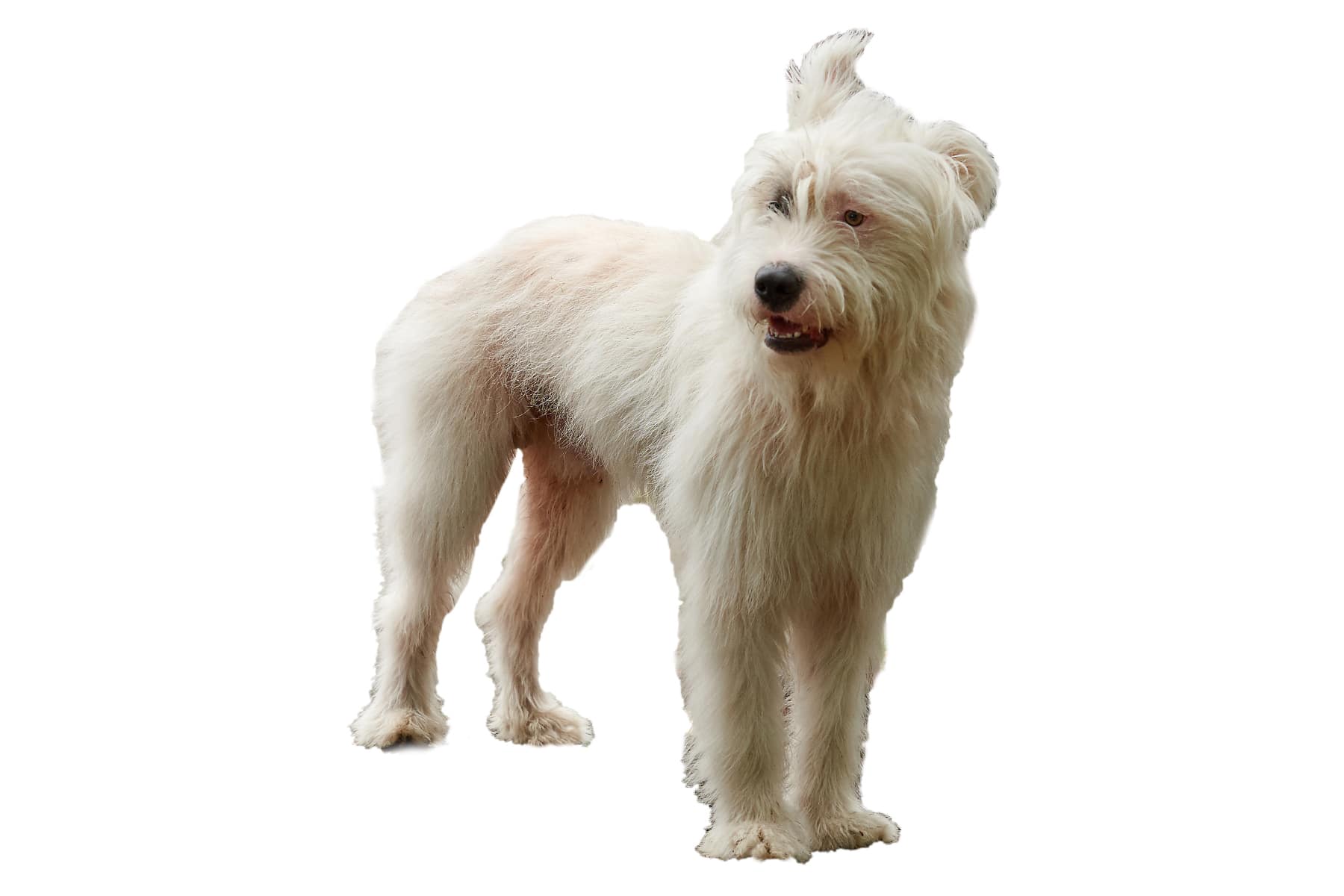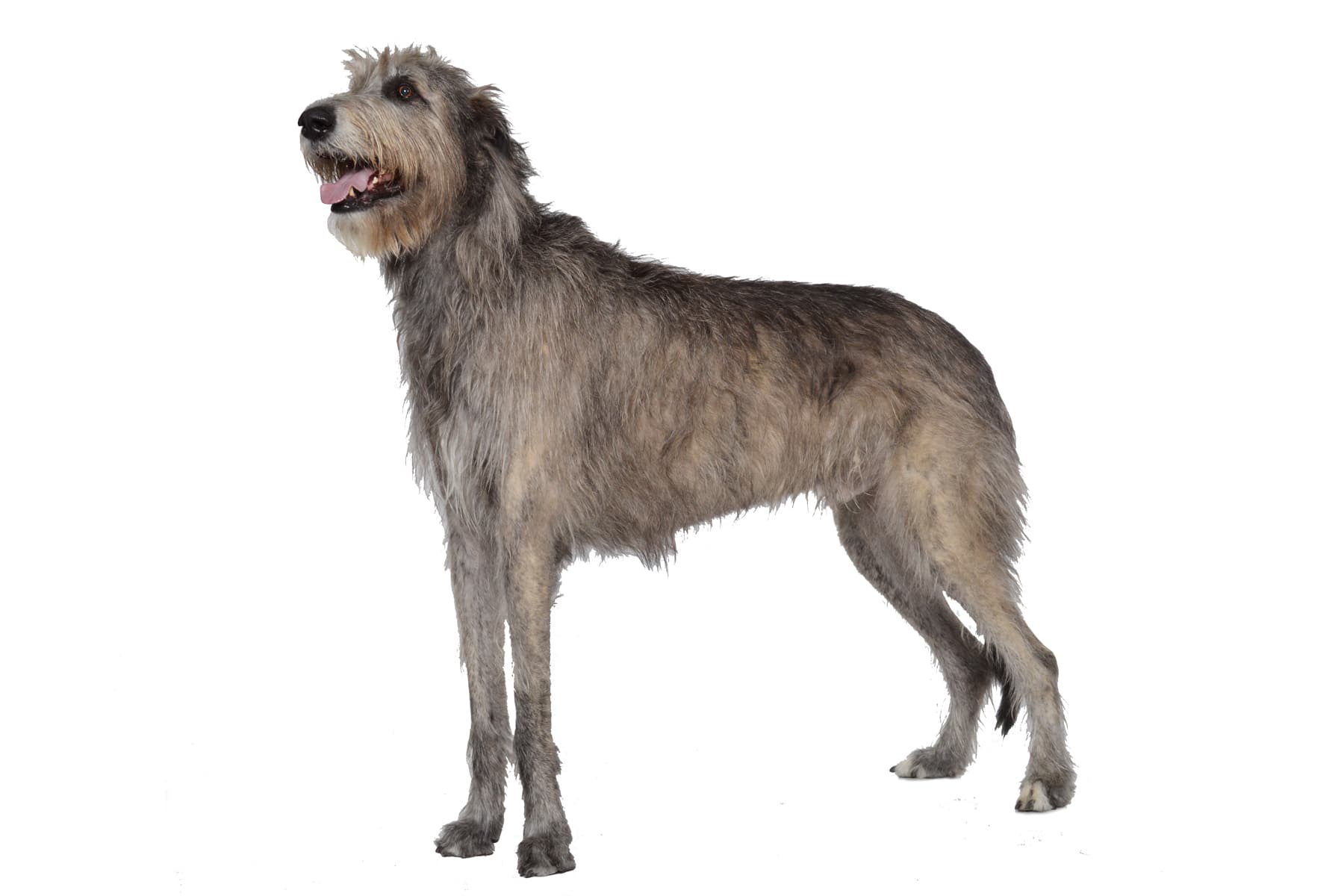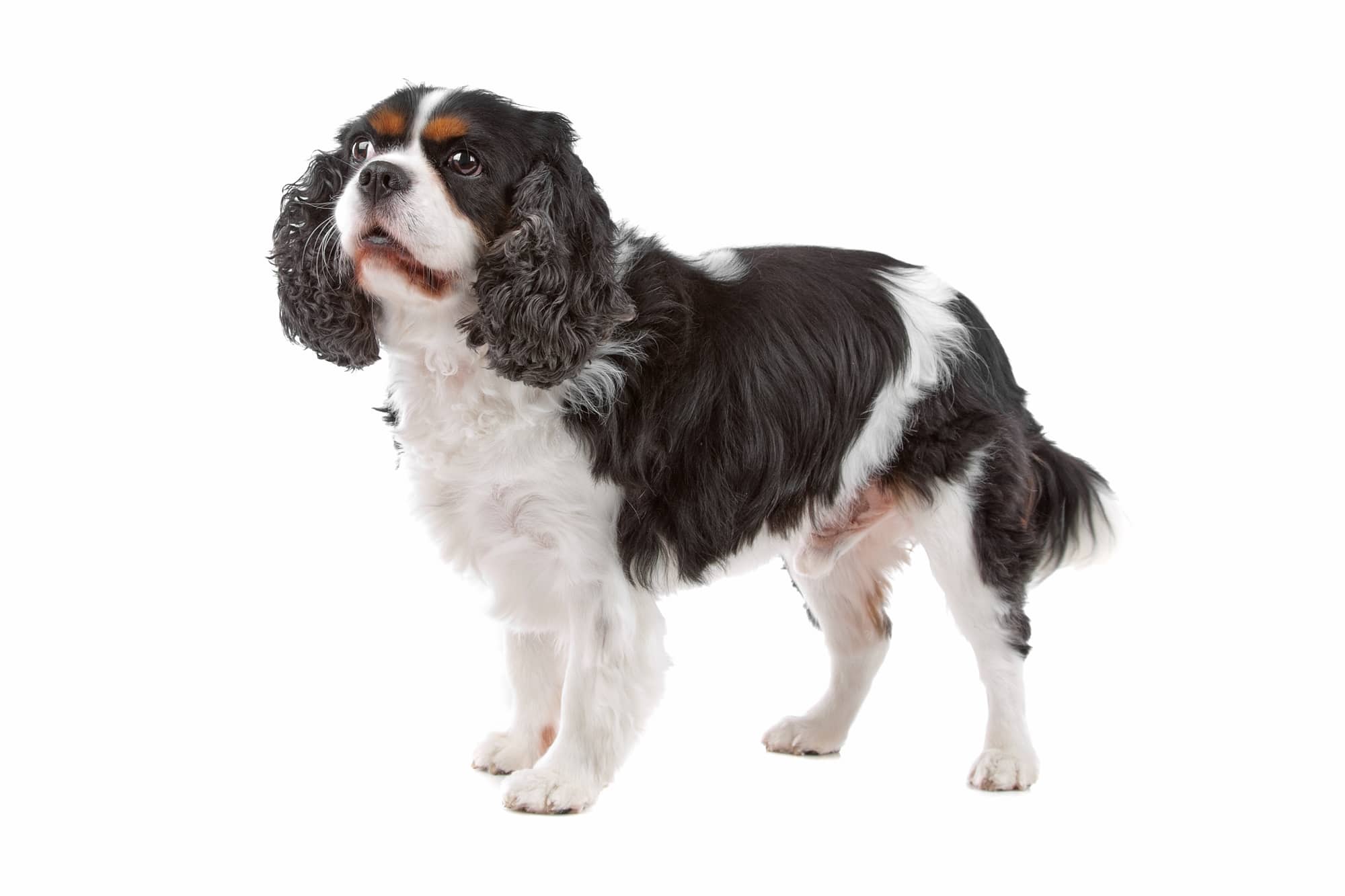Dogo Argentino
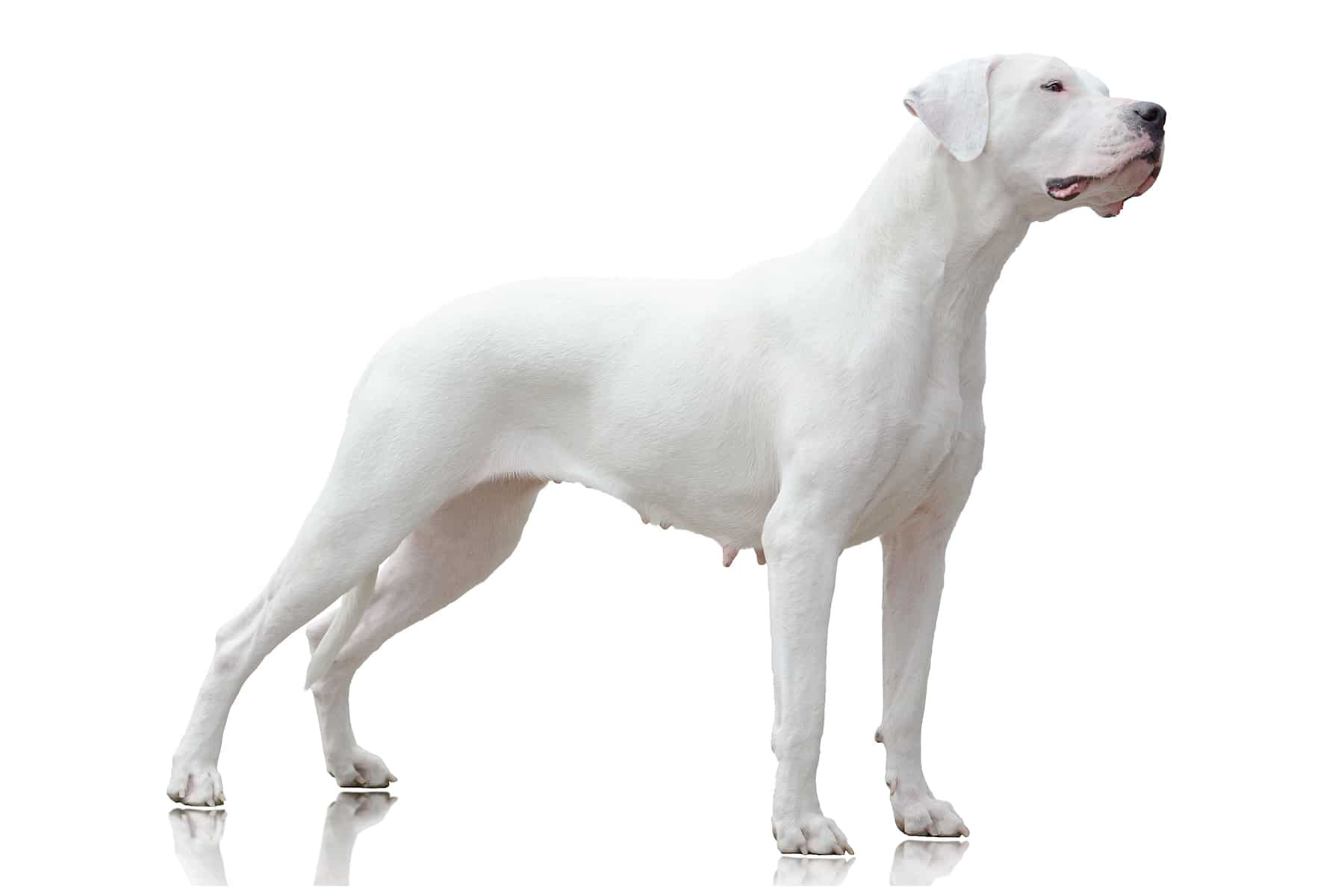
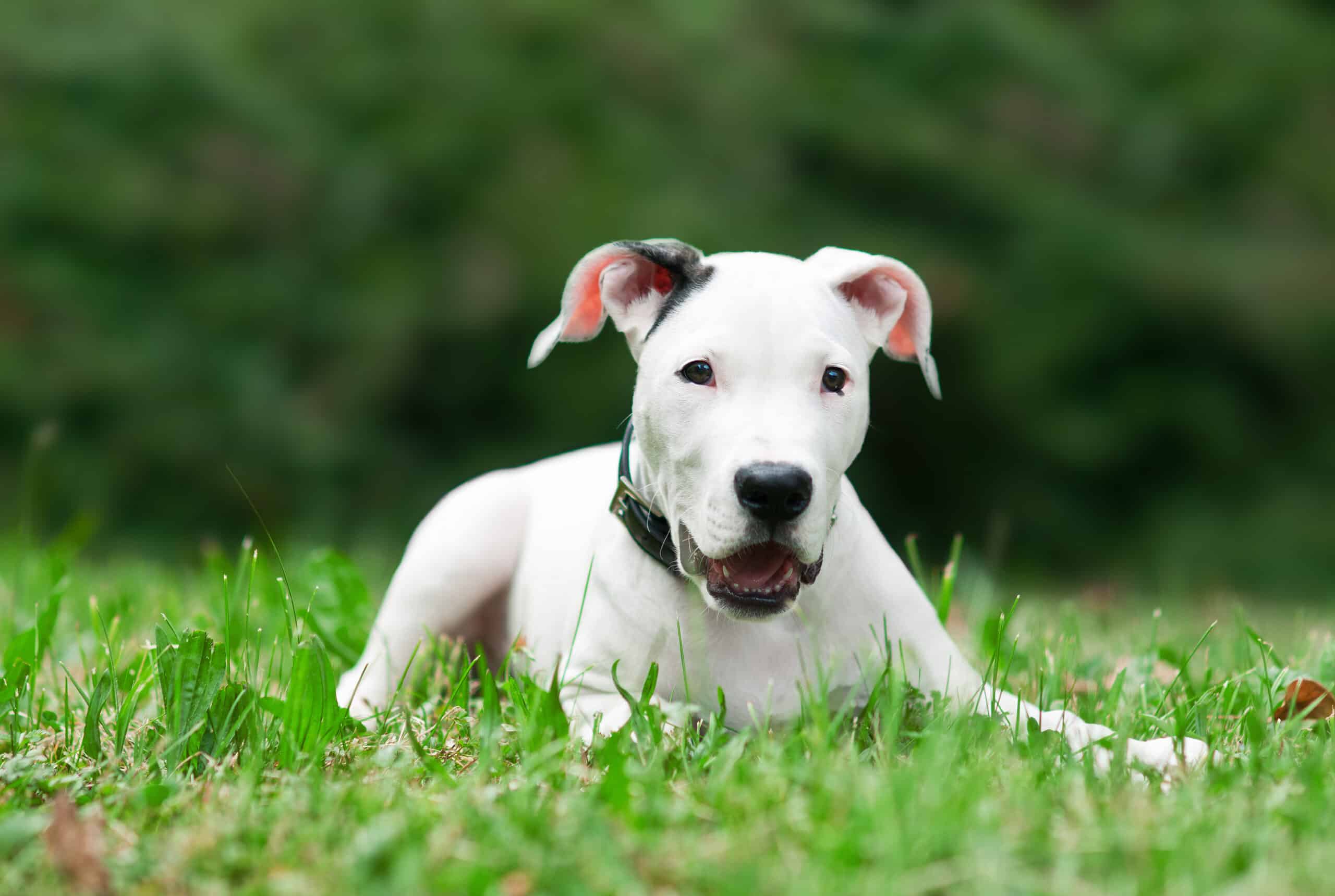
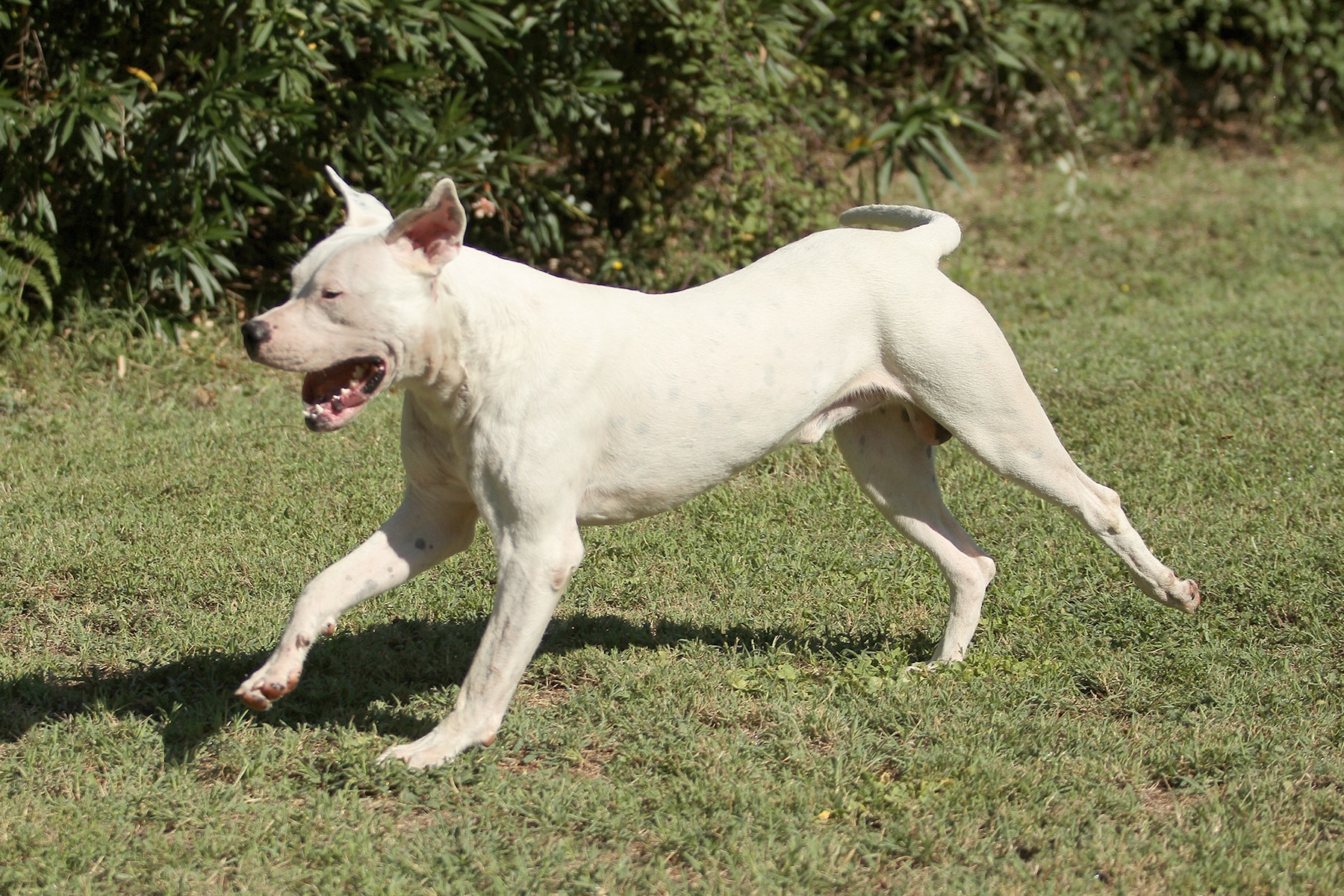
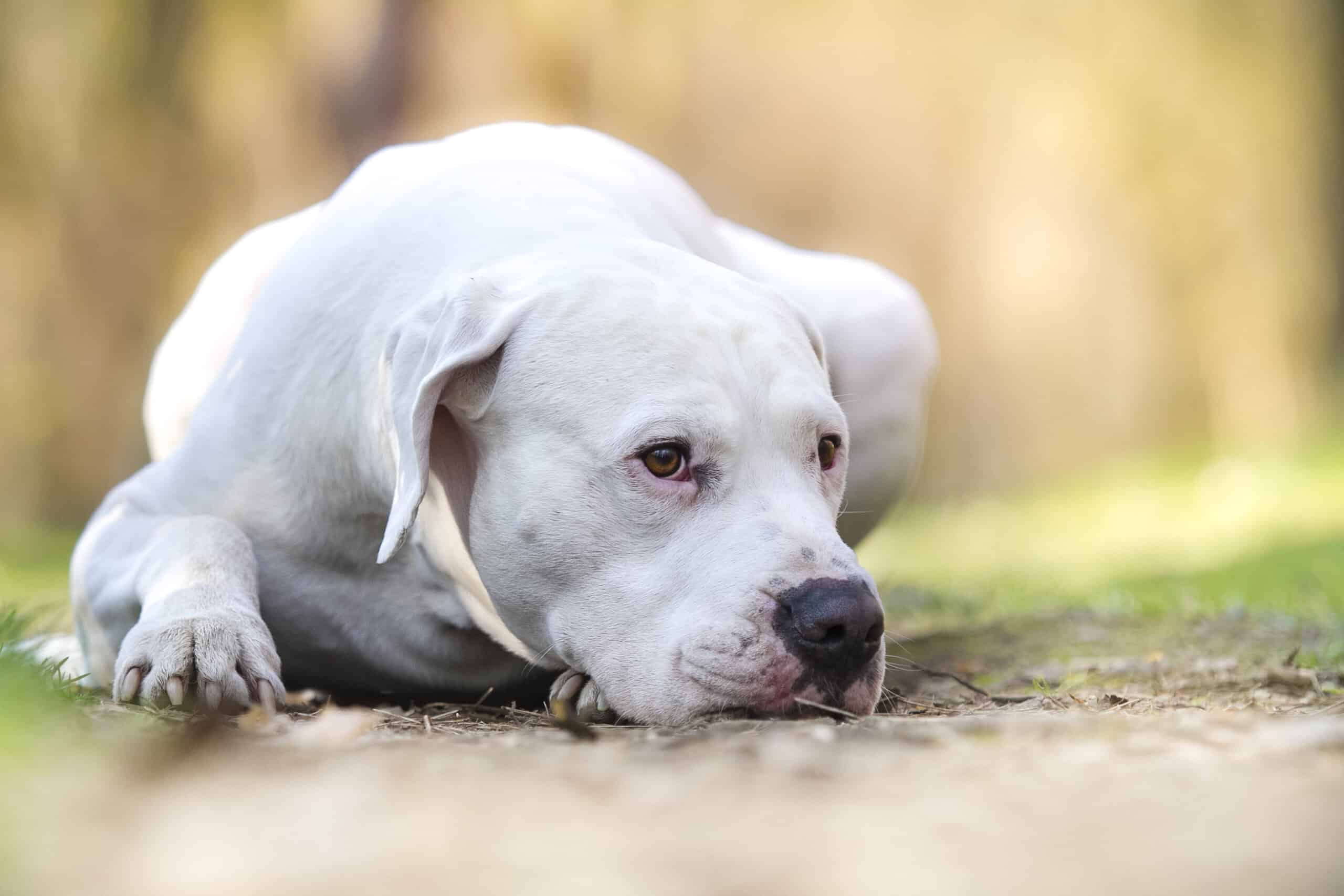
Temperament:
They are white musclemen with a big heart and excellent dogs. Nevertheless, Dogo Argentinos are still quite unknown in Germany. This is different in other countries. In its native Argentina, the Dogo Argentino even became a film legend thanks to the movie El Perro.
Characteristics
With a shoulder height of around 60 to 70 centimetres, these white athletes are relatively large for a domestic dog. An adult Argentine Mastiff weighs between 40 and 50 kilograms. They belong to the Molosser family.
As a rule, the Argentine Mastiff is a pure white dog. However, the black nose and dark eyes indicate that it is not an albino. The white coat color and the short top coat are important breeding characteristics.
Nevertheless, there are specimens that have dark patches on the coat of the head. According to the breeding standard, however, the head must be at least 90 % pure white. A dark pigmentation of the skin is also characteristic of the athletic dog. This must not be visible through the coat.
Due to the strict rules for coat color, hereditary diseases often occur.
The head is quite large and massive. The base of the ears lies on the side of the head and is relatively high. The shape of the ears belongs to the tipped ear type. Ear cropping is often practiced in this breed. This modification is not species-appropriate and is prohibited in many European countries. The purpose of cropping the ears is to achieve a more dangerous appearance. The Argentine Mastiff carries a long sabre tail.
She has an open, friendly and playful nature. As she gets on very well with children, this dog is also recommended for families.
This breed was originally bred as a hunting dog. A fact that cannot be hidden. The hunter is in its bones. Even with consistent training, the hunting instinct cannot be driven out of the sow dog. Moreover, this instinct is linked to a pronounced intention to kill. When hunting, the Dogo Argentino is extremely skillful and stalks its prey silently.
Due to its strong character, the Great Dane is difficult to train. They do not like to be subordinate. Inconsistent training can therefore lead to serious problems. An aggressive dog is difficult to bring back under control. It is generally regarded as a fighting dog. However, the Dogo Argentino also usually displays very dominant behavior towards other dogs.
For these reasons, the breed is on the breed list in some countries. In some countries, keeping them is prohibited or only possible under special conditions.
The breed wants to show off its fitness and needs exercise. With sufficient exercise and good husbandry, a Dogo Argentino can live for 10 to 12 years.
Coat care:
Shedding:
Energy level:
Trainability:
Children suitable:
The right food
The hunger of these muscular guys should not be underestimated.
When choosing food, make sure that it contains high-quality ingredients, is balanced and meets your dog's requirements. Age, size or weight, activity and health status play an important role here. You should follow the manufacturer's recommendations for the amount of food.
Treats should only be fed in moderation and deducted from the basic diet to avoid obesity.
Puppies can be fed 4-6 times a day. The number of meals should be gradually reduced to 2 per day until the dog is fully grown.
Compared to other dog breeds, the Argentine Great Dane has a relatively short feeding distance. This is why this breed is prone to flatulence.
Health & Care
The Dogo Argentino is only suitable for experienced dog owners. This intelligent dog needs plenty of exercise. That's why you should take him for lots of walks and keep him mentally challenged. He has an excellent sense of smell, so you can play search games with him. If you want, you can even have him trained as a search dog. Agility or competitive dog sports are also recommended.
The Great Dane is a family dog. You should therefore not keep them in kennels. Dogs that are often left alone can develop severe behavioral problems.
The Argentine Mastiff is undemanding when it comes to grooming. With its short coat, the outdoor dog was bred as a robust hunting companion. That has remained the same: It is easy to care for, even today.
The coat should be brushed several times a week to remove dirt. It is also advisable to remove dead hair. You can also do this with a dog brush.
You should carefully clean the ears about twice a month. It can also happen that the claws do not wear off sufficiently. In this case, you will need to trim them with claw nippers. Dog claws have blood flow almost to the tip. If you have no experience in cutting claws, you should go to the vet.
Regular bathing is harmful to the dog. It destroys the coat's natural protection against the weather and should only be done in exceptional cases. Use a special dog shampoo. There is nothing wrong with a summer bath in a stream or paddling pool.
A hearing test should be carried out on puppies after six weeks. Congenital deafness is common in this breed.
Suitable accessories
The Dogo Argentino is a very strong dog. It is therefore important to use a sturdy lead. It should be long enough. It is often not possible to walk an Argentine Mastiff without a lead. A drag lead is therefore recommended if necessary.
Whether a harness or a collar is preferred is up to you. A harness is more comfortable for the dog as it does not put pressure on the larynx. However, a pulling dog is more difficult to hold with a harness. A Halti should be considered if you are having difficulties training your dog.
The Argentine Mastiff is a fighting dog. Muzzles may therefore be compulsory in some places. The purchase of a muzzle should therefore be considered.
Toys that promote the dog's intelligence are recommended.
Other accessories your dog will need are a sleeping basket or mat as a place to retreat to, a food and water bowl, tick tweezers, claw clippers and a transport box for transportation in the car.
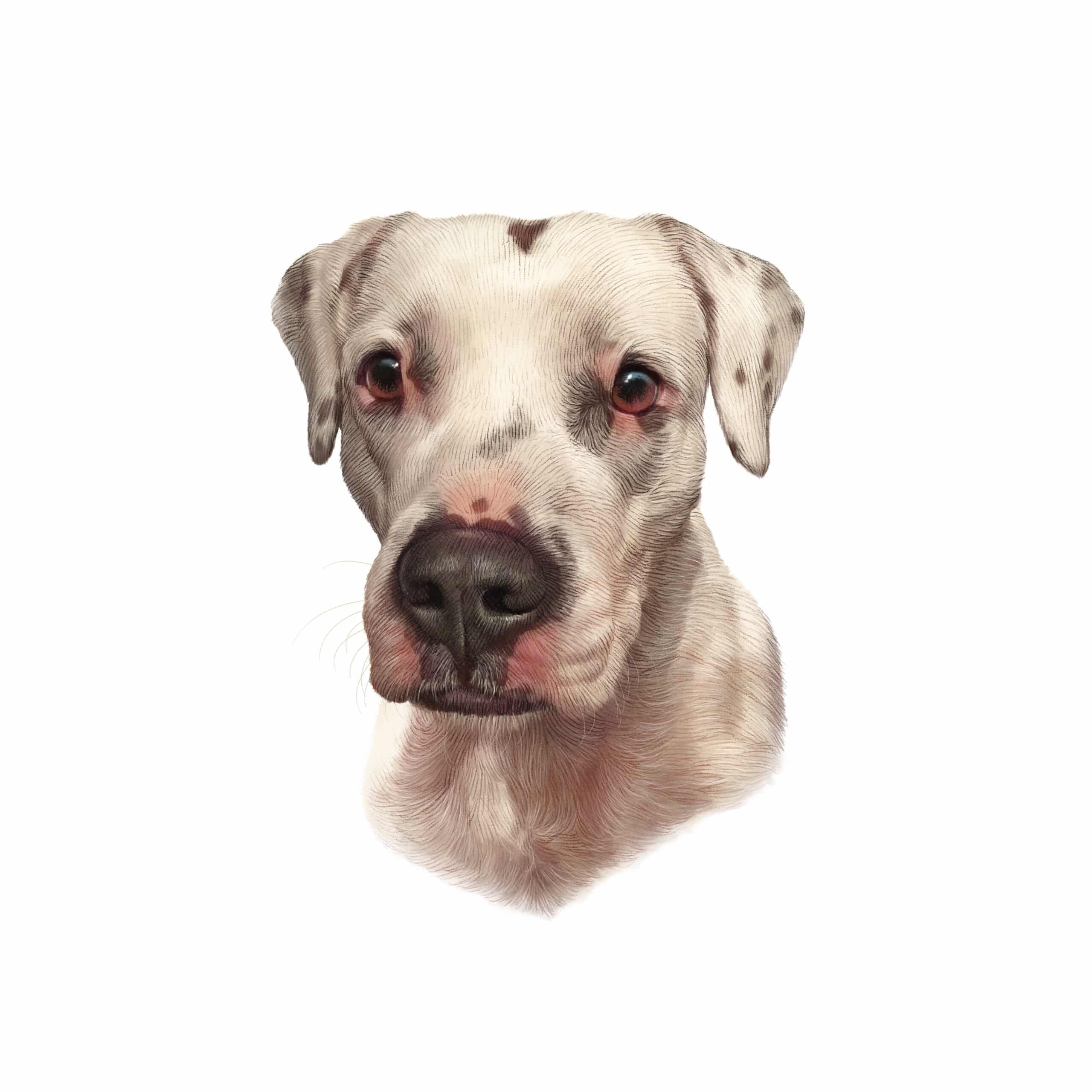
Origin & History
The white fighting dog originates from the province of Cordoba in Argentina. It was originally bred as a fighting dog and for hunting wild boar and big cats. In the meantime, this breed has developed into a working dog in South America.
In the middle of the 20th century, the requirements for this dog changed. At that time, people still wanted a dog with strength and a low stimulus threshold. Nevertheless, it should not attack people. It was Antonio Nores Martinez's attempt to breed a new hunting dog. This dog was to be able to hunt pumas or panthers. The usual European dogs were too weak for this.
The Dogo Argentino eventually emerged from a cross between native fighting dogs, mastiffs and pointers. The fighting dog was to slowly disappear. Only the capable hunting dog was to remain. The white color of the coat was intended to ensure that the dog was easily seen when hunting. Accidental shooting of the dog should therefore be avoided.
The first uniform breed standard was drawn up in 1928 by the breeder's son. In 1973, the breed was recognized by the FCI, the largest umbrella organization for dog breeds. It was assigned to section 2 Molossoids.
It was not until 1968 that the first Dogo Argentino came to Europe. Outside the South American continent, the breed is still rare and unknown.

